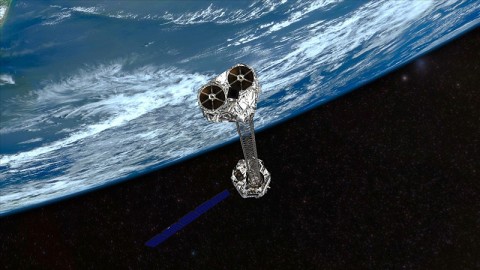Written by Whitney Clavin
NASA’s Jet Propulsion Laboratory
 Pasadena, CA – Final pre-launch preparations are underway for NASA’s Nuclear Spectroscopic Telescope Array, or NuSTAR. The mission, which will use X-ray vision to hunt for hidden black holes, is scheduled to launch no earlier than June 13th from Kwajalein Atoll in the Marshall Islands.
Pasadena, CA – Final pre-launch preparations are underway for NASA’s Nuclear Spectroscopic Telescope Array, or NuSTAR. The mission, which will use X-ray vision to hunt for hidden black holes, is scheduled to launch no earlier than June 13th from Kwajalein Atoll in the Marshall Islands.
The observatory will launch from the belly of Orbital Sciences Corporation’s L-1011 “Stargazer” aircraft aboard the company’s Pegasus rocket.

The mission plan is for NuSTAR and its rocket to be attached to the Stargazer plane on June 2nd. The aircraft will depart California on June 5th and arrive at the Kwajalein launch site on June 6th. The launch of NuSTAR from the plane is targeted for 8:30am PDT (11:30am EDT) on June 13th.
NuSTAR is a Small Explorer mission led by the California Institute of Technology in Pasadena and managed by NASA’s Jet Propulsion Laboratory, also in Pasadena, for NASA’s Science Mission Directorate in Washington. The spacecraft was built by Orbital Sciences Corporation, Dulles, VA.
Its instrument was built by a consortium including Caltech; JPL; the University of California, Berkeley; Columbia University, New York; NASA’s Goddard Space Flight Center, Greenbelt, MD; the Danish Technical University in Denmark; Lawrence Livermore National Laboratory, Livermore, CA; and ATK Aerospace Systems, Goleta, CA. NuSTAR will be operated by UC Berkeley, with the Italian Space Agency providing its equatorial ground station located at Malindi, Kenya.
The mission’s outreach program is based at Sonoma State University, Rohnert Park, CA. NASA’s Explorer Program is managed by Goddard. JPL is managed by Caltech for NASA.
For more information, visit http://www.nasa.gov/nustar .


